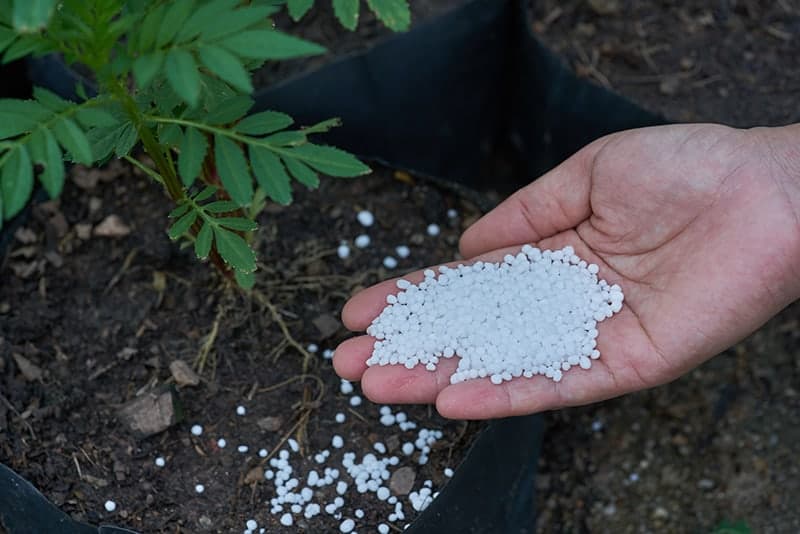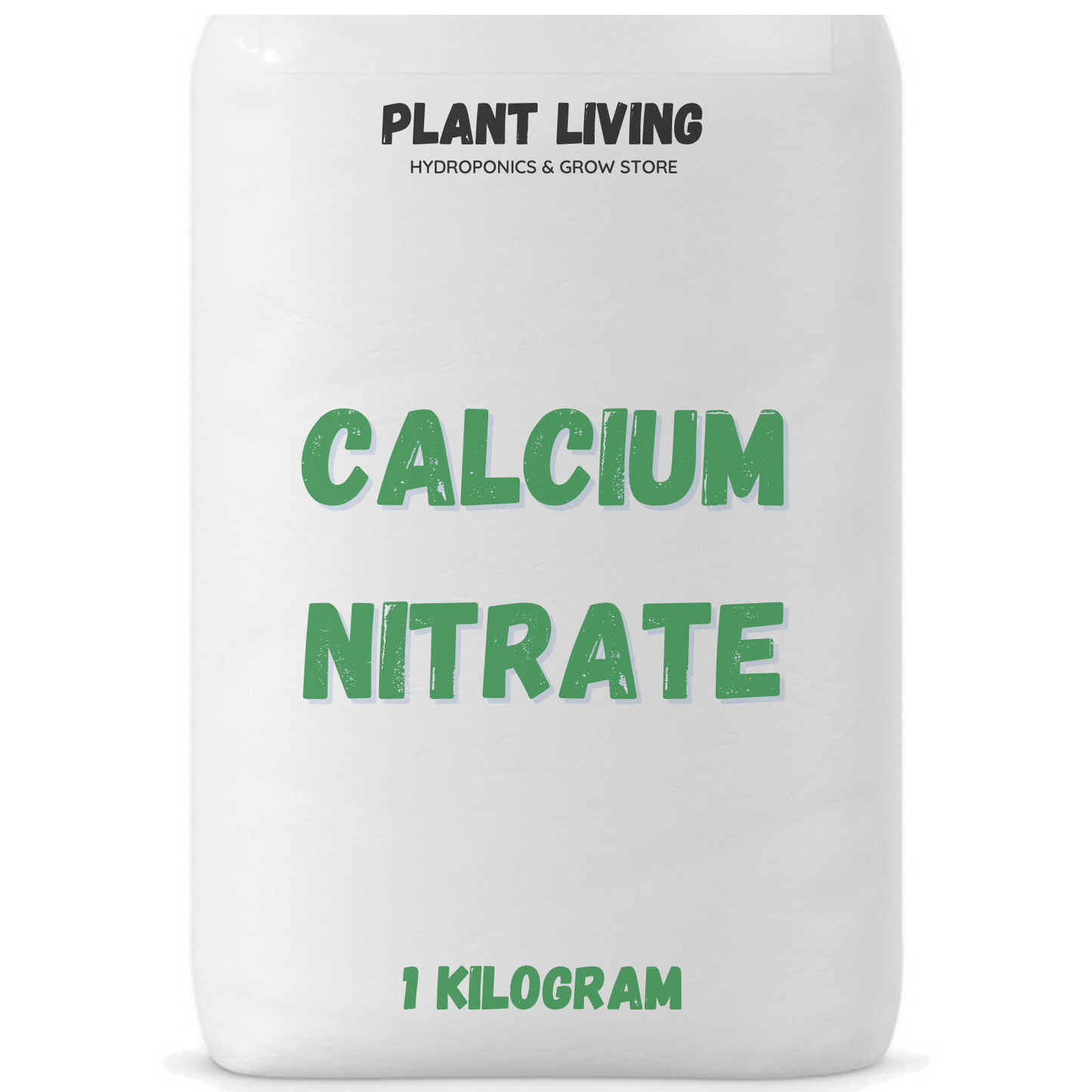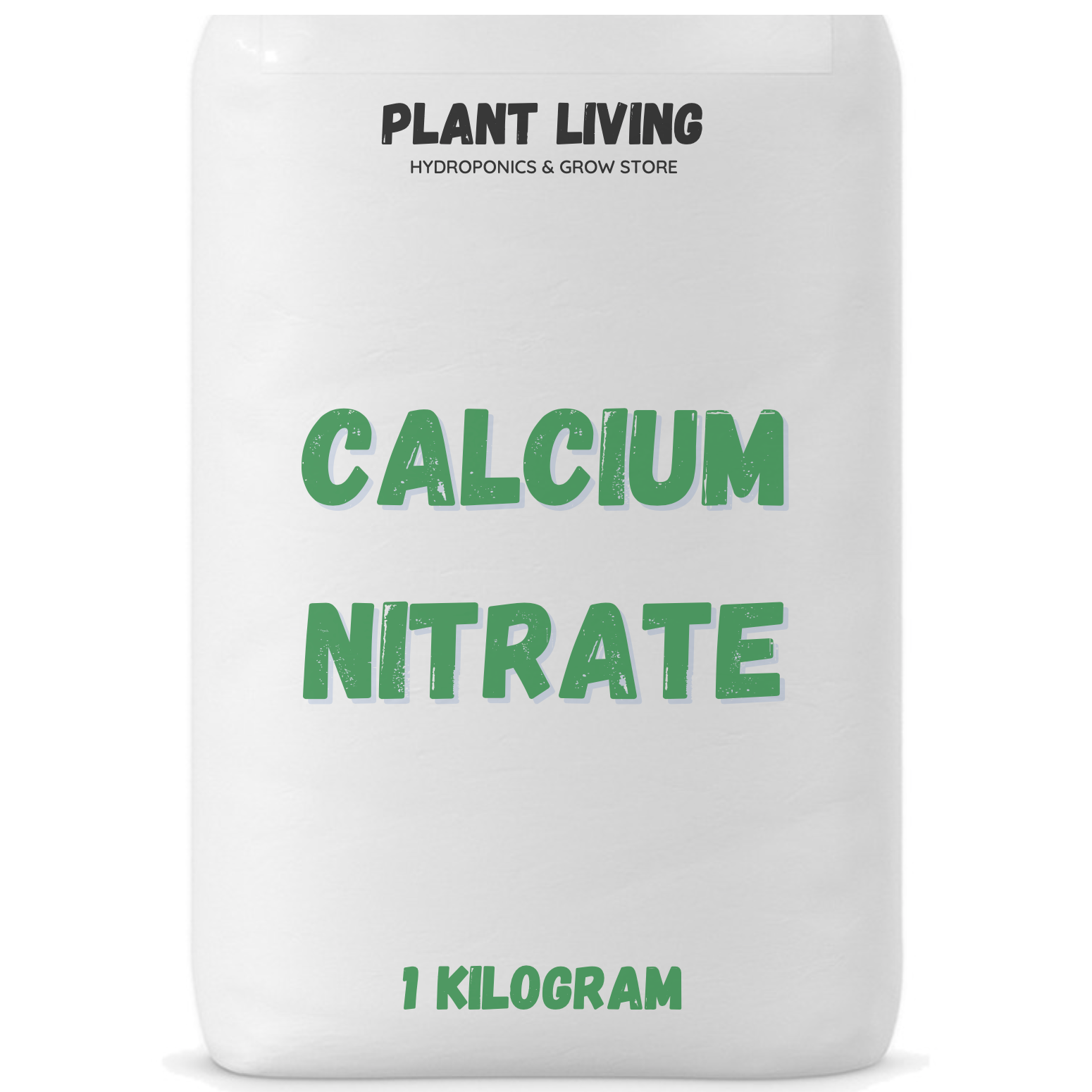Calcium Nitrate 1kg
Calcium Nitrate 1kg
Couldn't load pickup availability

Calcium nitrate fertilizer is a synthetically derived compound, which takes on the appearance of salt. It is commonly used in fertilizer solutions, or as a fertilizer in its own right, for house plants, garden plants, and crops. Calcium nitrate is the only water-soluble source of calcium and is therefore often used in liquid fertilizers or as a foliar spray to be applied directly to plant leaves.
Why Use Calcium Nitrate Fertilizer?
Calcium nitrate contains both calcium and nitrogen, which are nutrients plants require to survive. Calcium is vital for some plants to be able to produce seeds, and it also helps a plant to produce a better quality of fruit with a longer shelf life. Calcium is also an important element in the formation of plant cell walls, and the proper availability of calcium in a plant will help to ensure cell walls are strong, protecting the plant from disease and stressors.
Nitrogen is understood by most gardeners to be an essential nutrient which plants need generous quantities of. Nitrogen is a vital component in the production of amino acids and chlorophyll, and a good supply of nitrogen will generally result in a lush and green plant, which is visibly thriving. Calcium nitrate can be used to fertilize any plants, but there are some situations when it is particularly useful.
Calcium-Deficient Plants
Some plants can suffer from calcium deficiencies, especially those in poor quality soils where calcium may be naturally lacking. Even in good quality soils, calcium availability will decrease over time, so using a balanced fertilizer with all of the necessary nutrients is important. Some plants are more prone to calcium deficiencies than others, such as tomato plants, which can suffer from calcium deficiency as a result of heat stress. If you have a plant with a calcium deficiency, you may notice symptoms such as flowers prematurely falling from the plant or foliage curling inwards on itself.
Nitrogen-Deficient Plants
Nitrogen is a macronutrient that plants require, typically in much larger quantities than other nutrients. A nitrogen deficient plant will exhibit symptoms such as slow growth, and a lack of new shoots appearing. Nitrogen deficiencies can also cause pale-colored leaves, and a slow down in leaf production. Ammonium nitrate is often given to plants as their source of nitrogen, but this isn’t always the best idea as the ammonium can interfere with the plant's calcium absorption.
Although it may fix the nitrogen deficiency, ammonium nitrate can cause other problems if it inhibits a plant's calcium uptake. Instead, calcium nitrate works as a better fertilizer, supplying the necessary nitrogen without causing calcium issues. Calcium nitrate is especially recommended for use in plants that are more susceptible to calcium deficiencies.What is Calcium Nitrate Made Of?
Calcium nitrate is not organic and instead is a synthetically derived compound with the chemical formula Ca(NO3)2. It is made by applying nitric acid to limestone and then neutralizing it with ammonia.
How to Use Calcium Nitrate in the Garden
Calcium Nitrate Fertilizer Application Rate
To mix your own calcium nitrate fertilizer for the treatment of diseased plants, add four tablespoons of calcium nitrate salts to one gallon of water, and mix. To use calcium nitrate fertilizer as a disease preventative, or to balance out the nutrientlevels in your plants, use one tablespoon of calcium nitrate to each gallon of water.
How to Apply Calcium Nitrate Fertilizer
A foliar spray of calcium nitrate fertilizer can also be used to treat the calcium or nitrogen deficiency of any plant. Spraying the foliage is preferable to treating the soil for plants that already show signs of nutrient deficiencies, as this is the quickest way to get the nutrients into the plant's system.
For fertilization and disease prevention, you can also use calcium nitrate fertilizer as a top dressing or side dressing, as a more slow-release option. To top dress the plants, you can use calcium nitrate fertilizer in its solid form. Use around half an ounce of salts for each square foot of soil, working it into the top inch of soil around the plants and taking care to avoid it coming into contact with any of the plant's leaves.
To side-dress your plants, follow the same guidelines, but instead of applying it throughout the top layer of soil, apply it in lines or circles around the outer edge of a plant’s base. After top dressing or side dressing your soil, water the soil well to encourage the nutrients to seep into the lower layers and reach the roots of the plants.
Share

